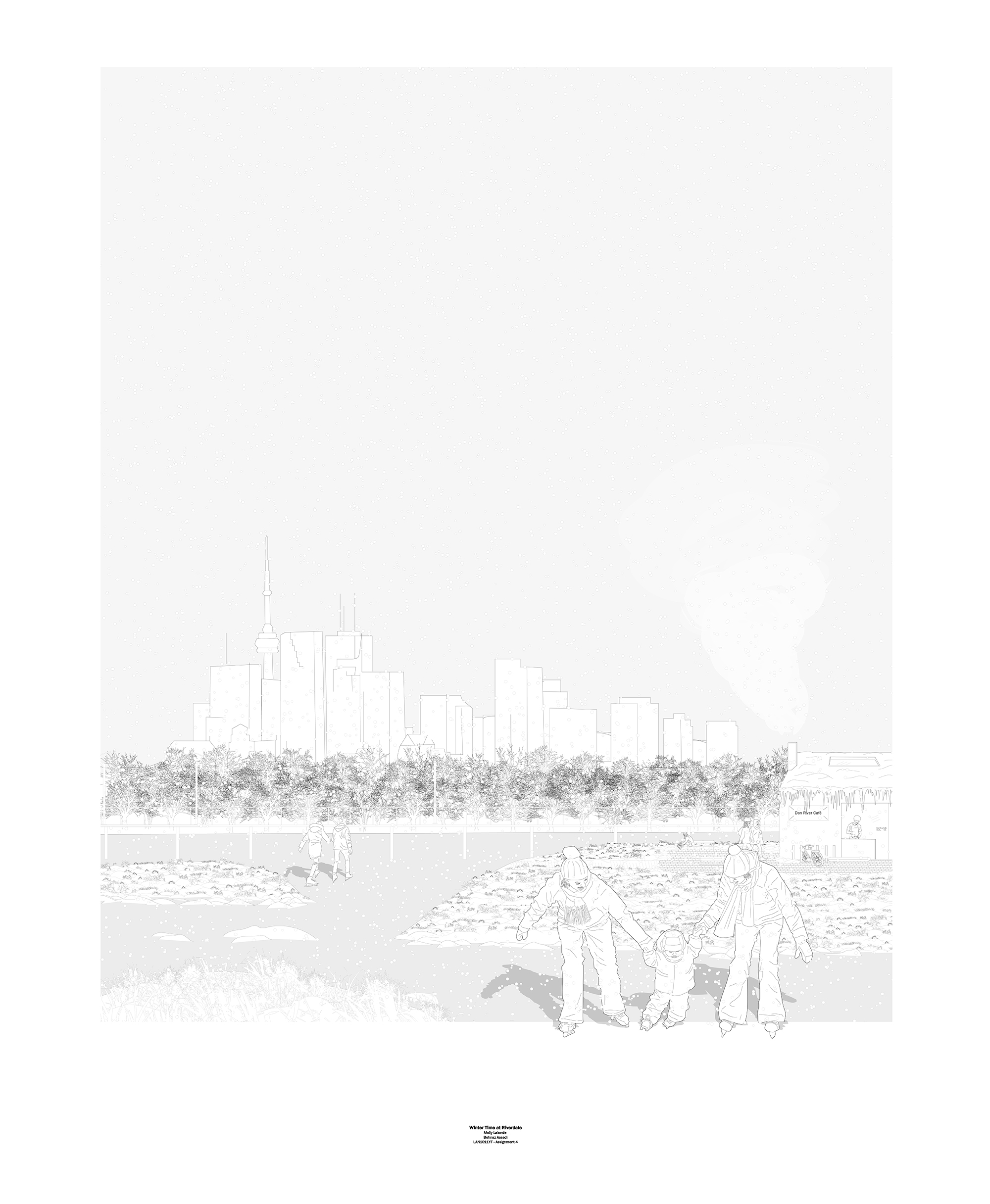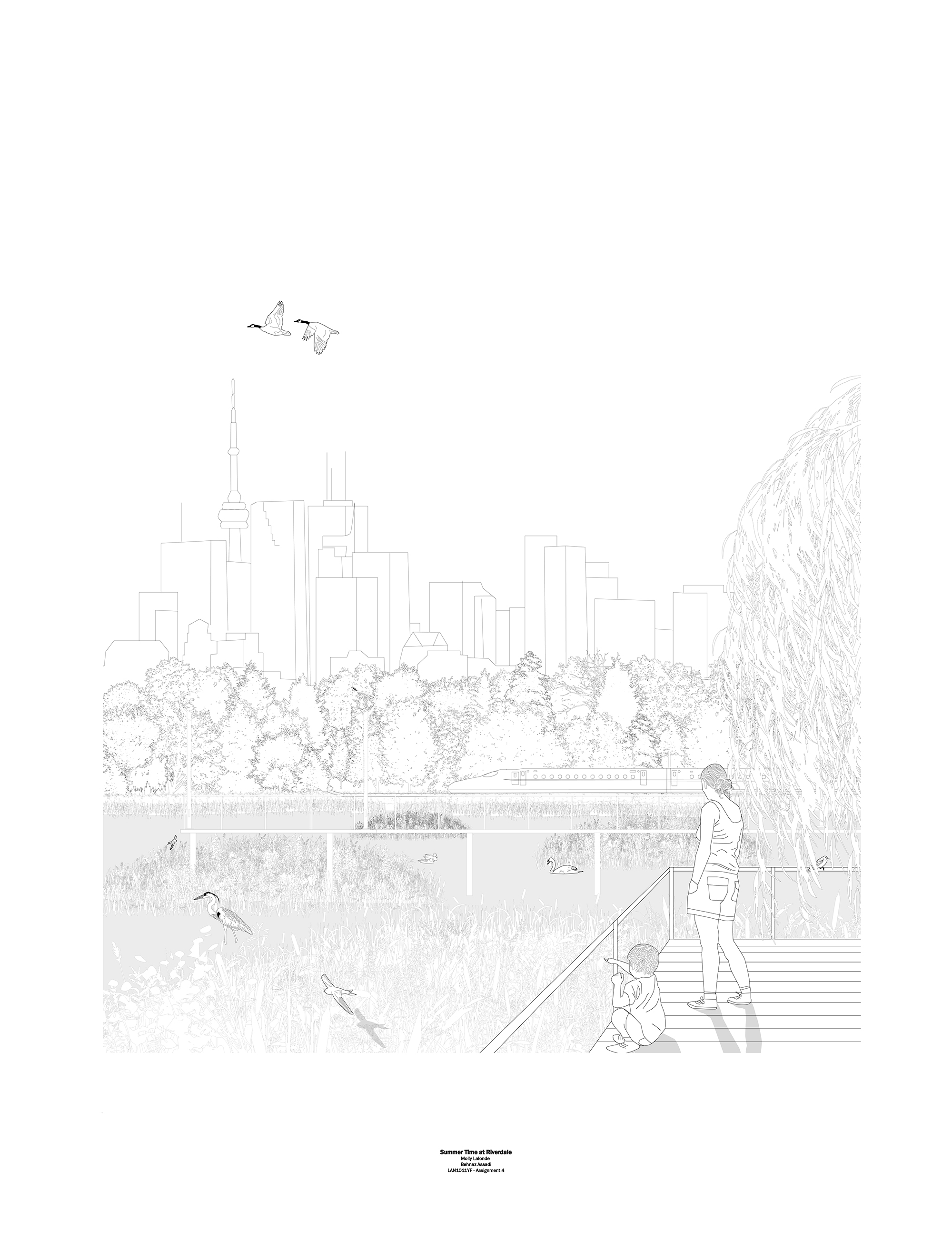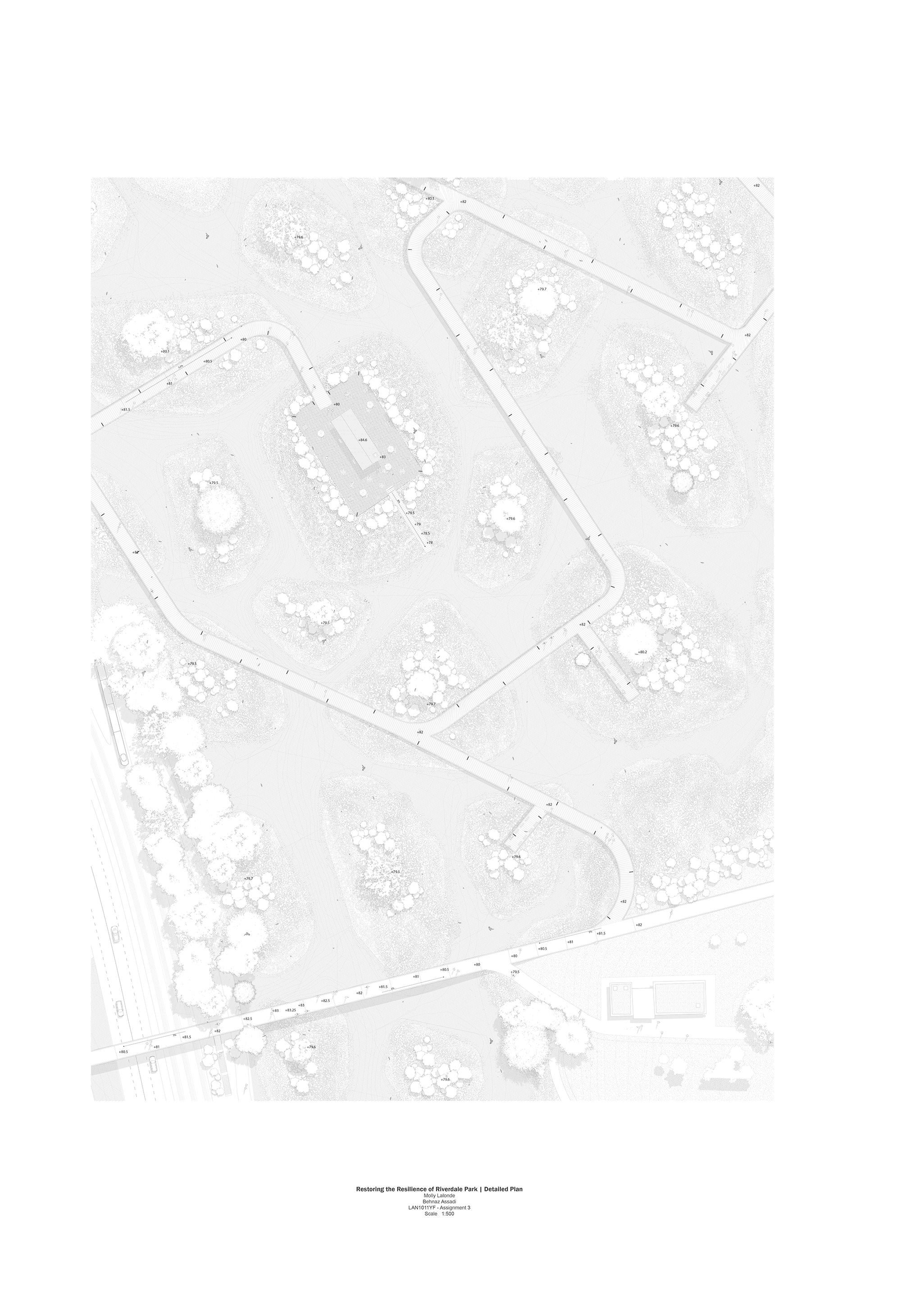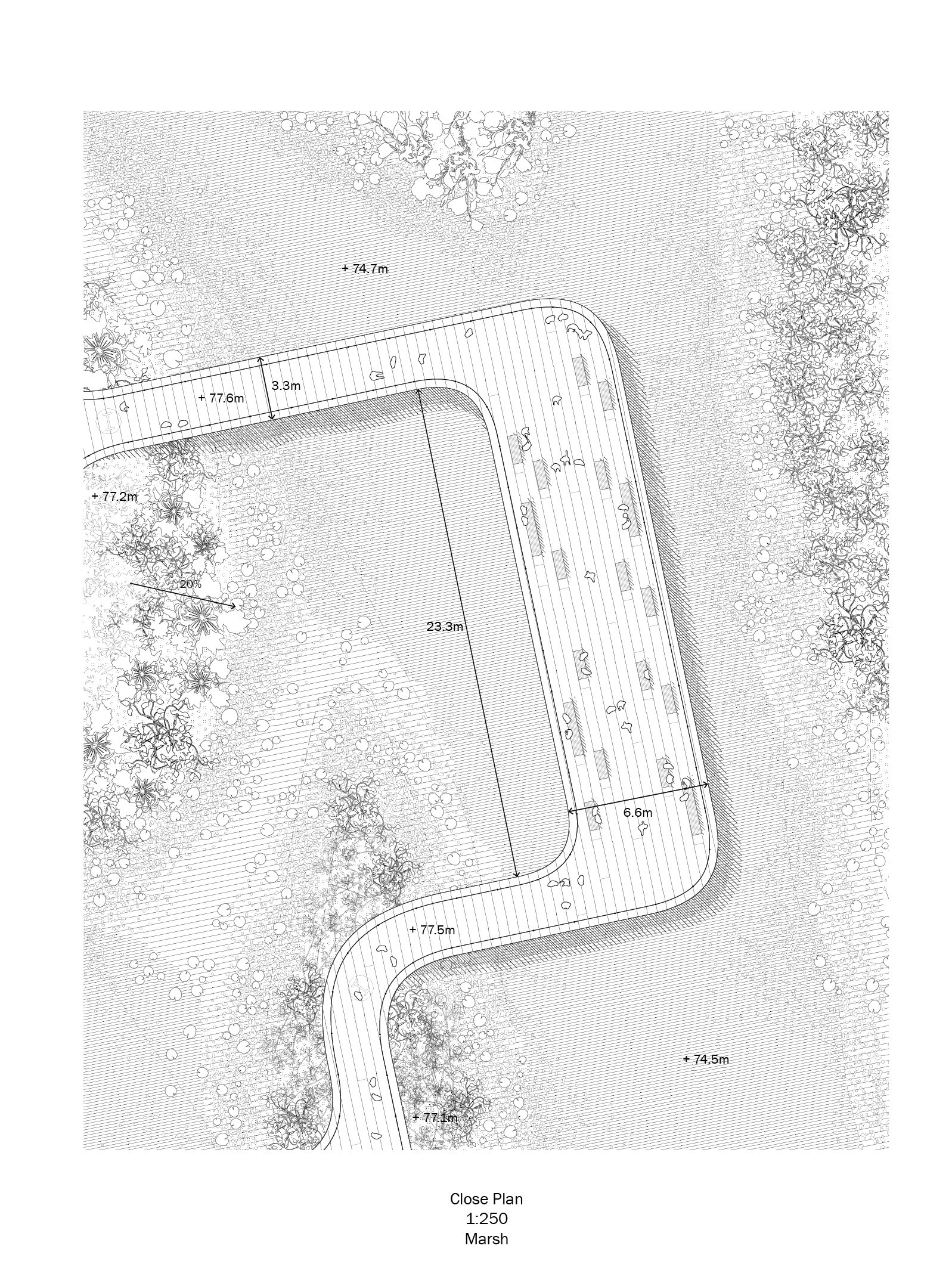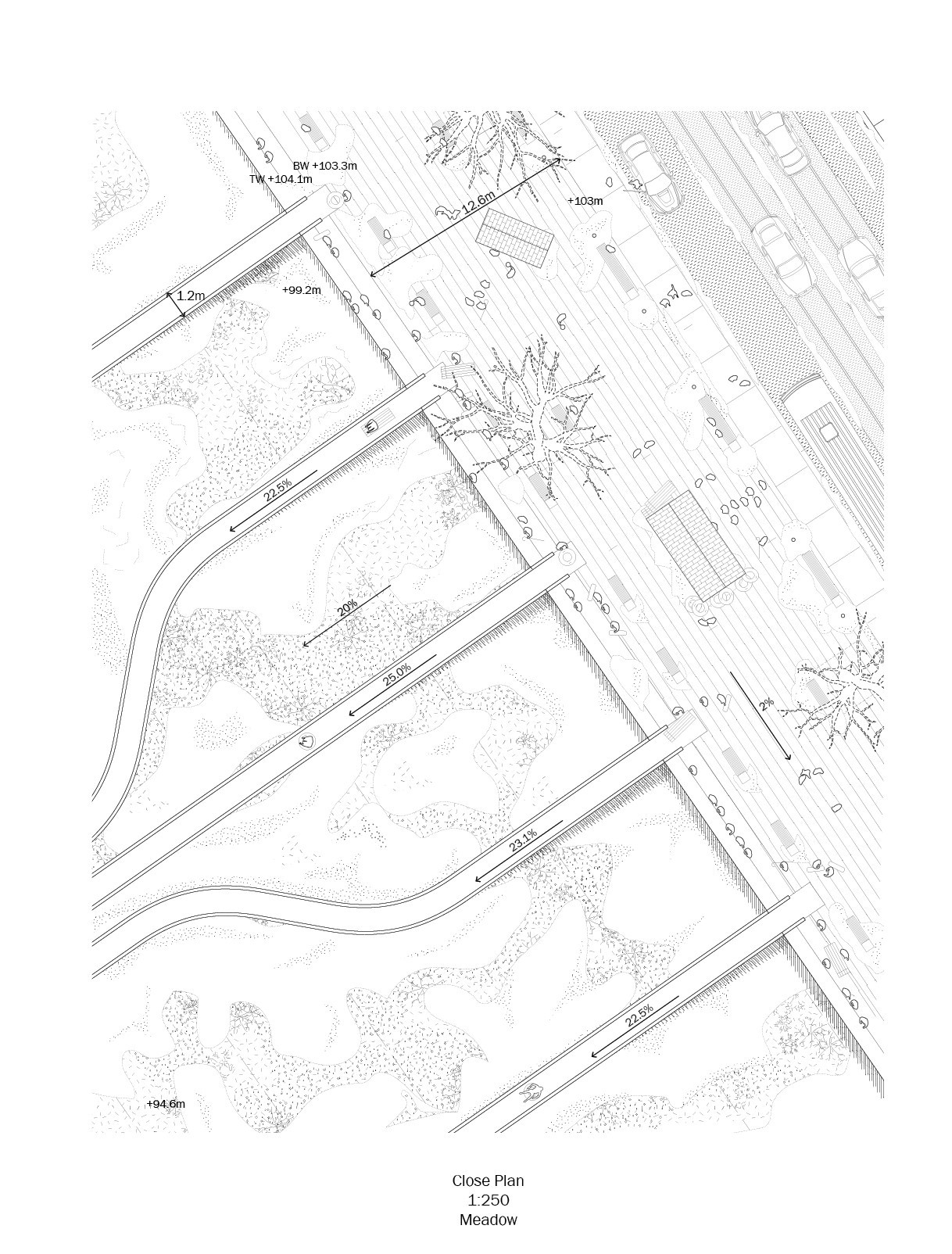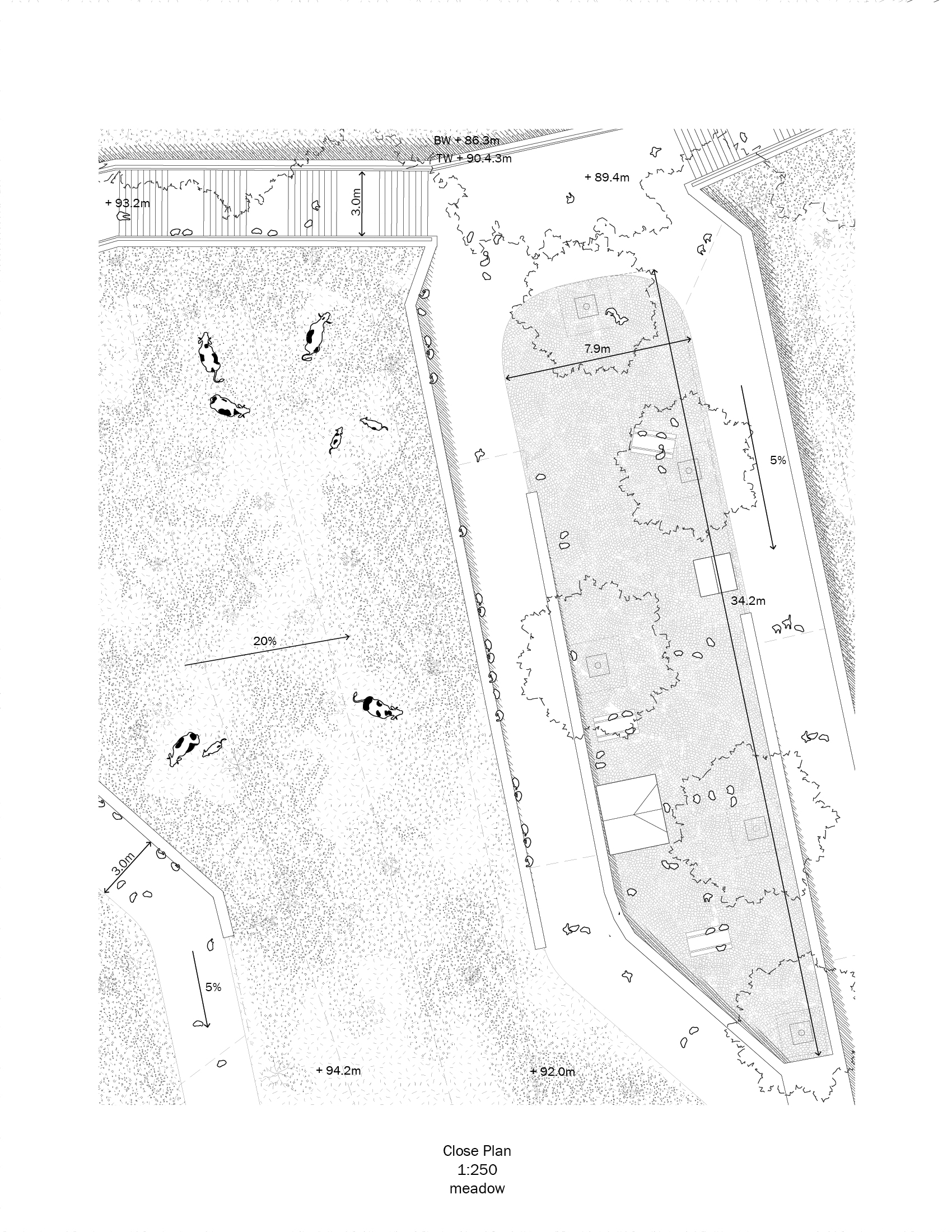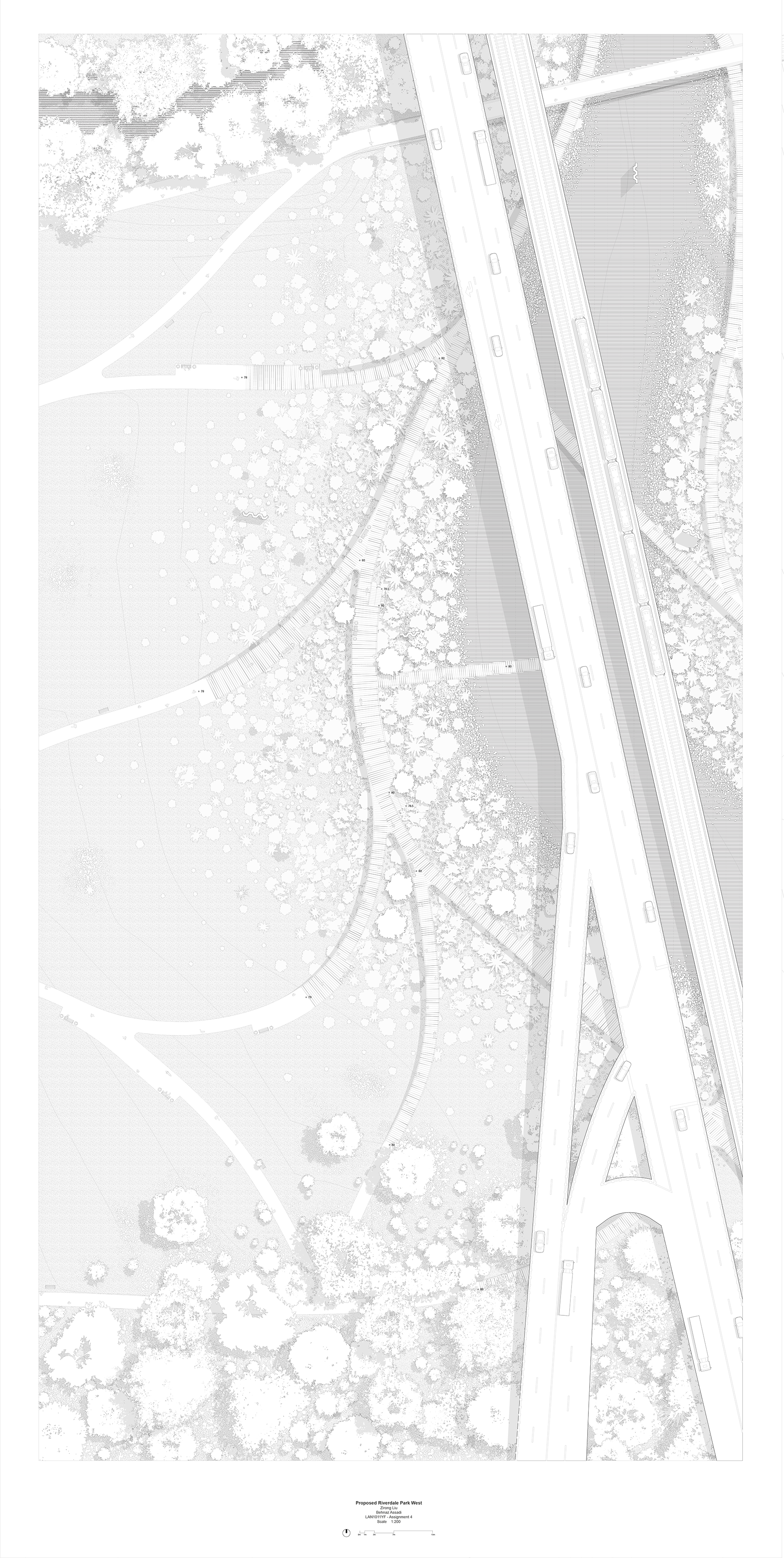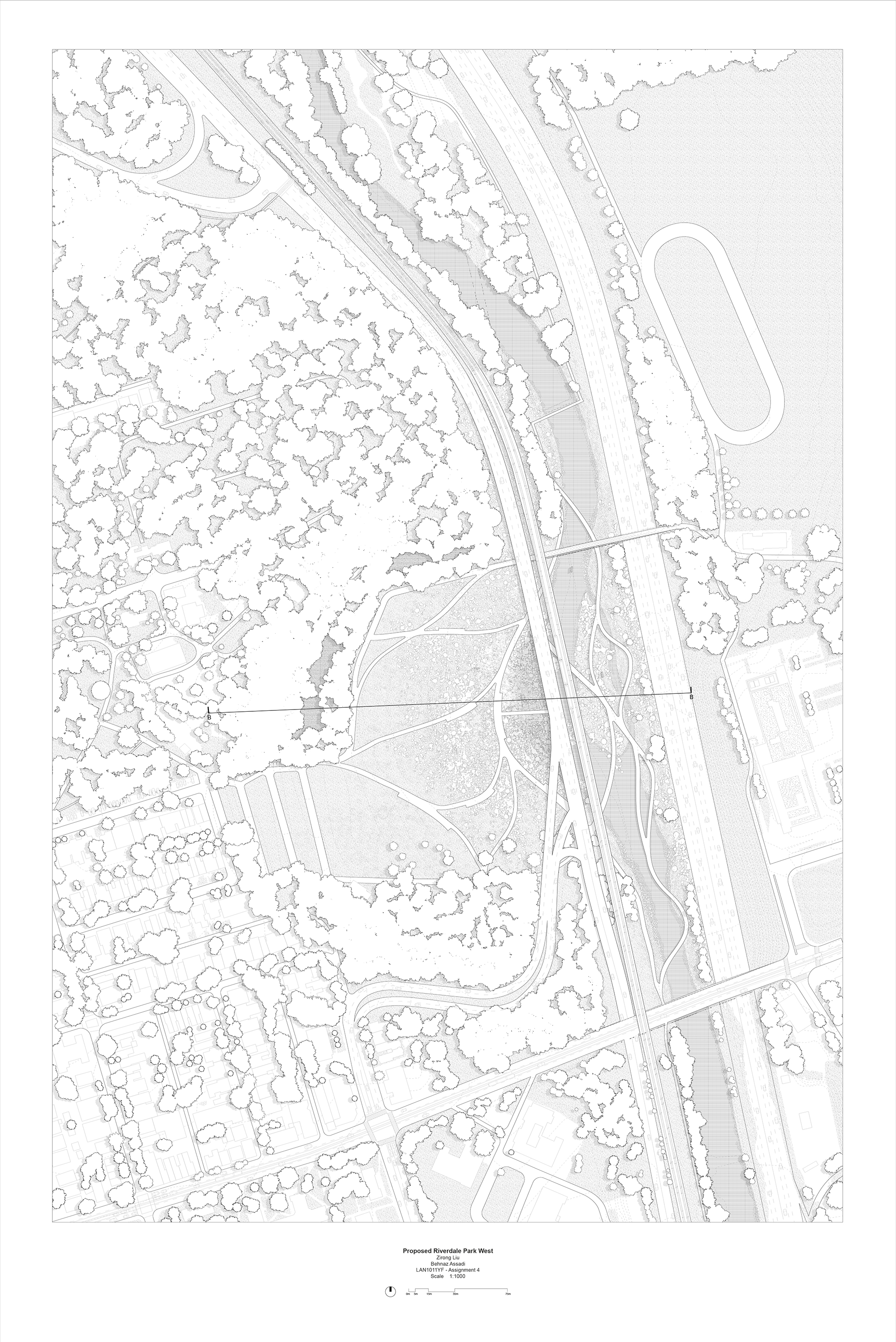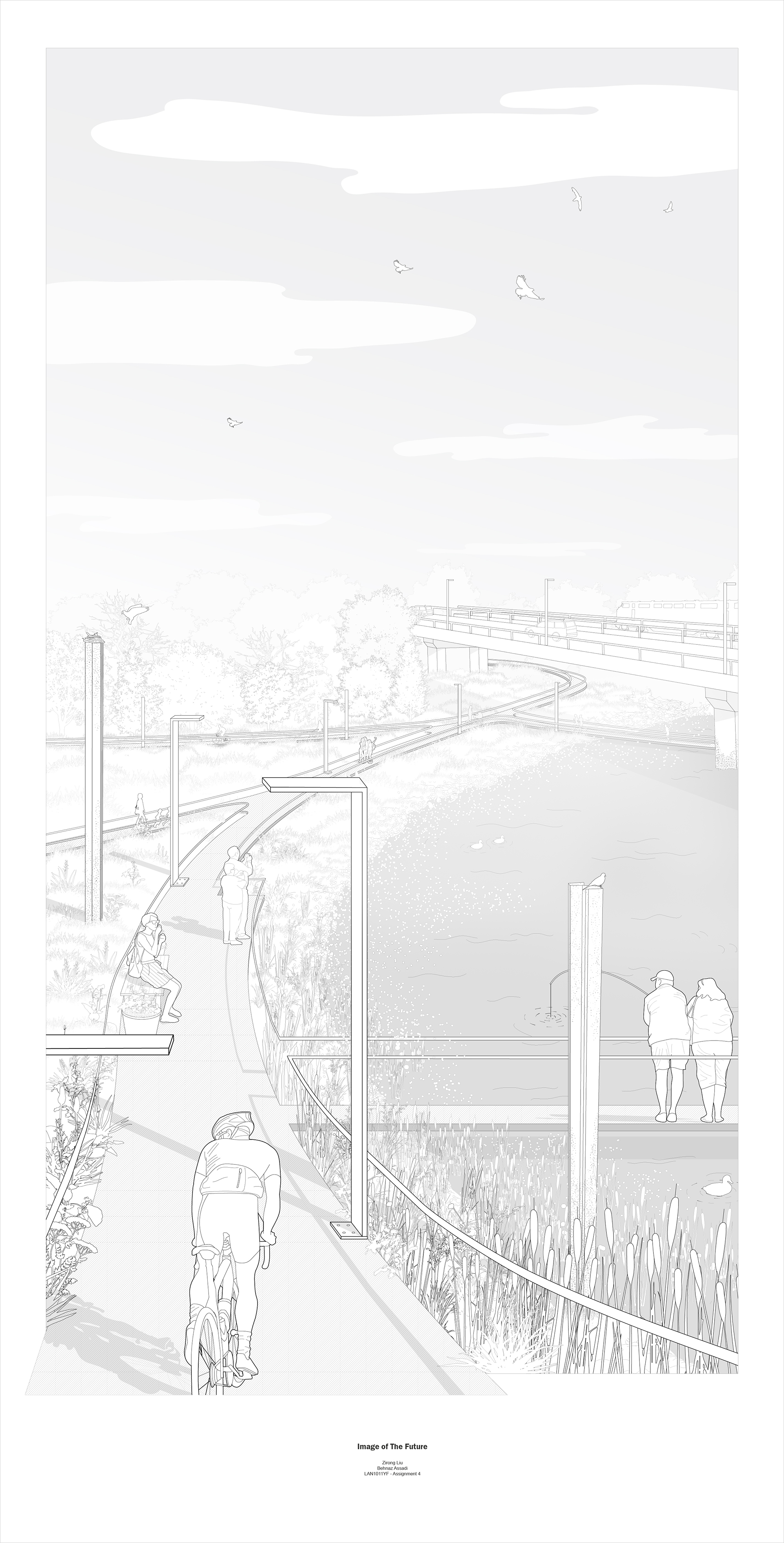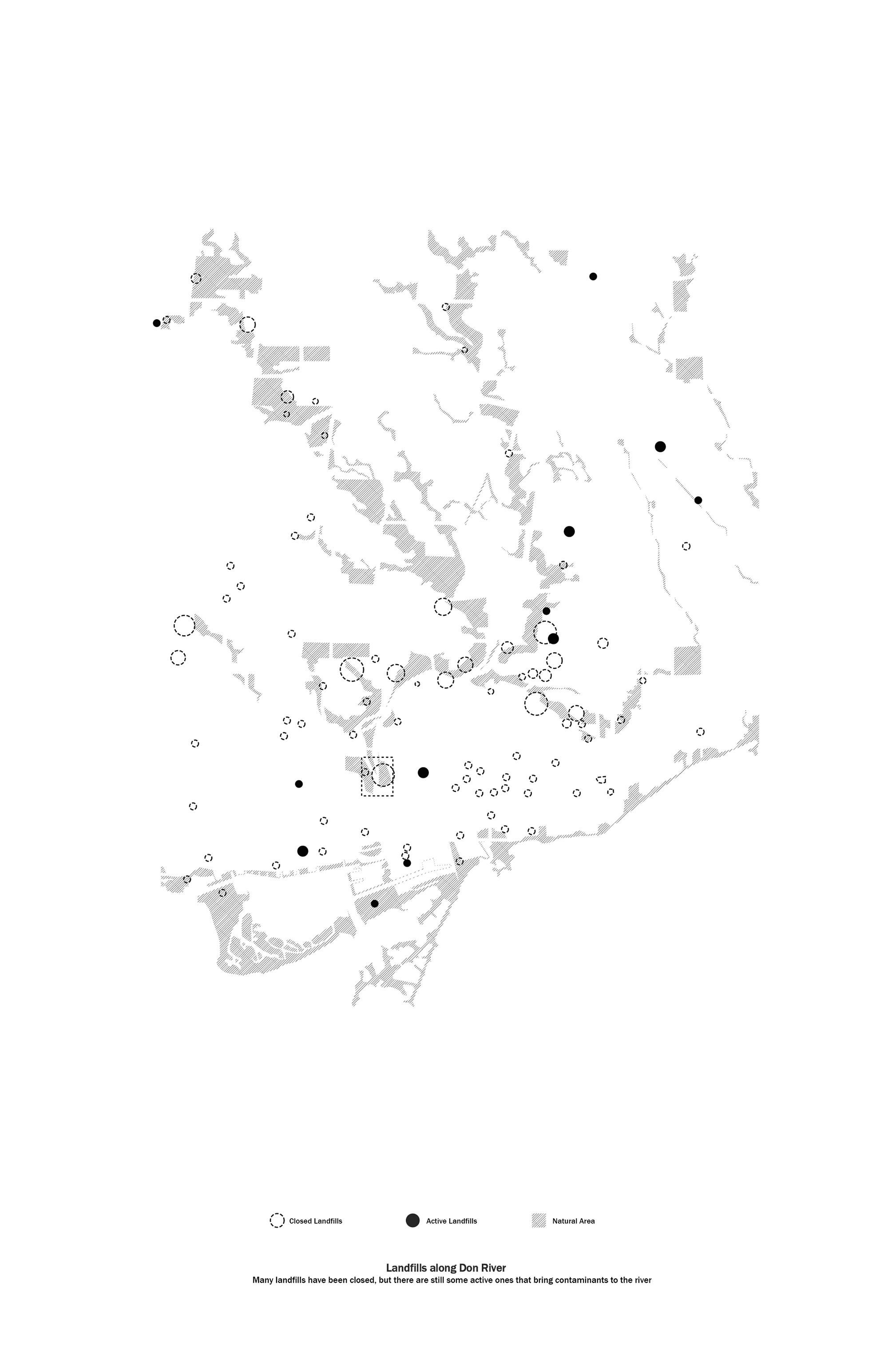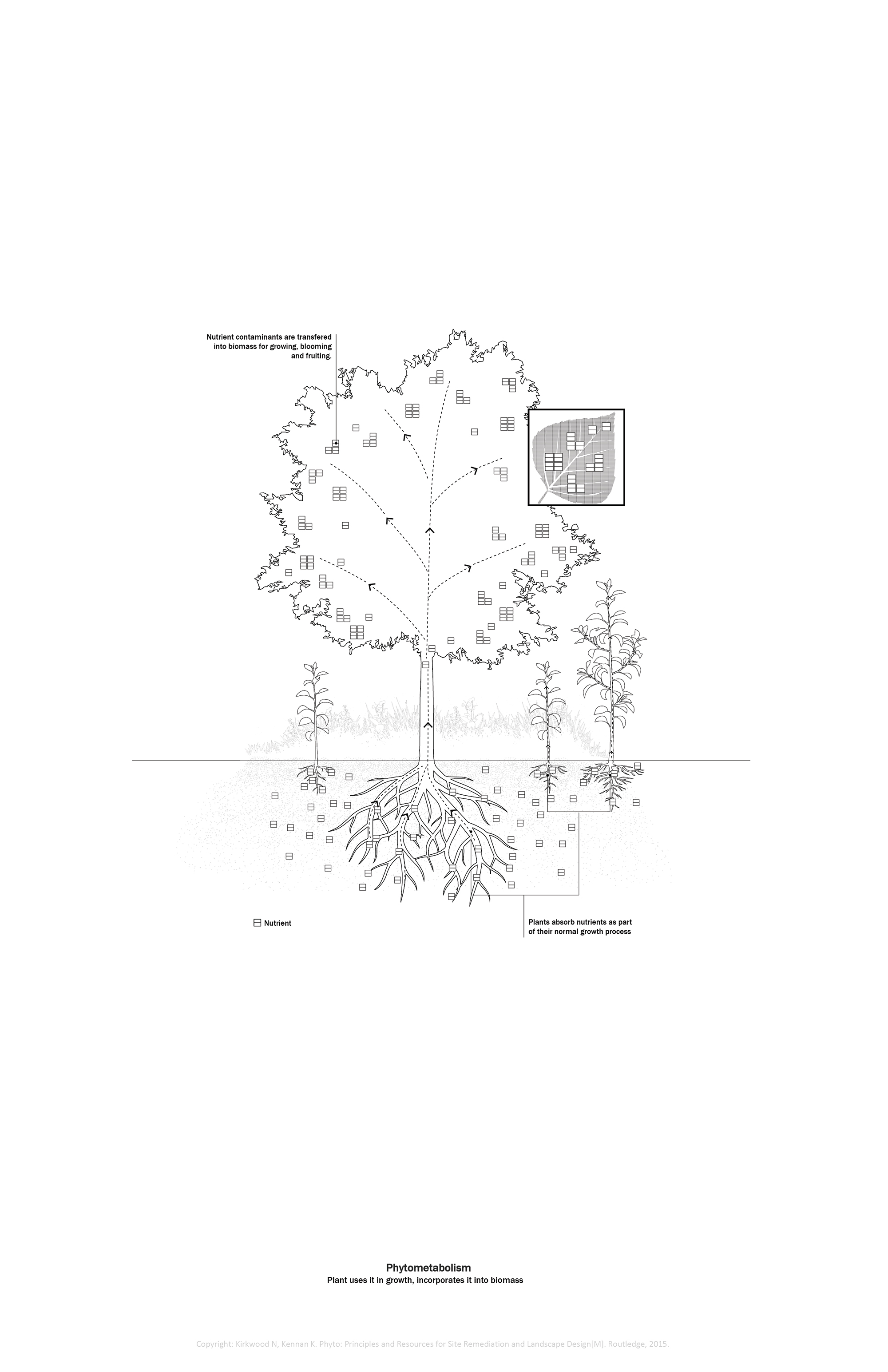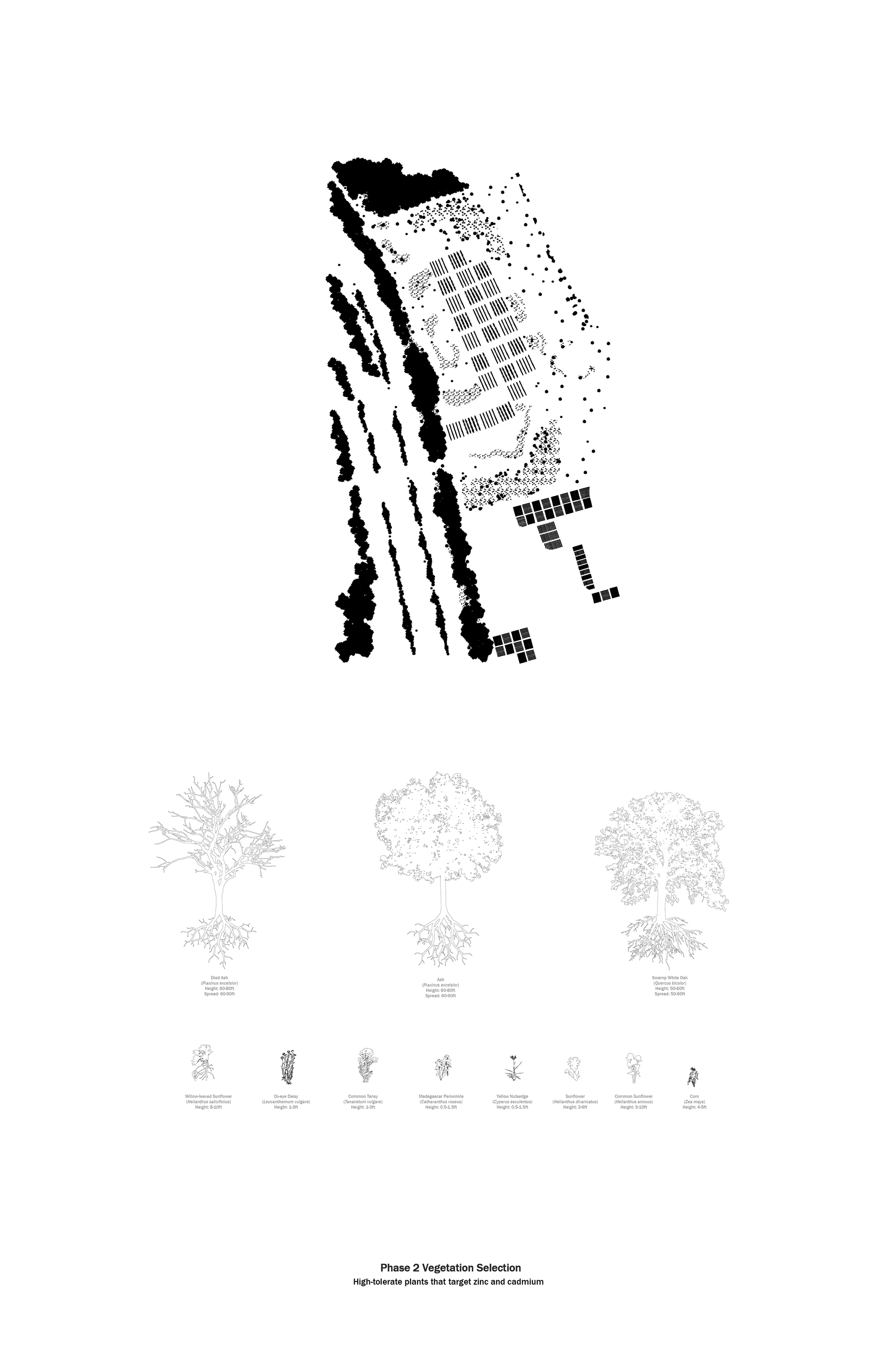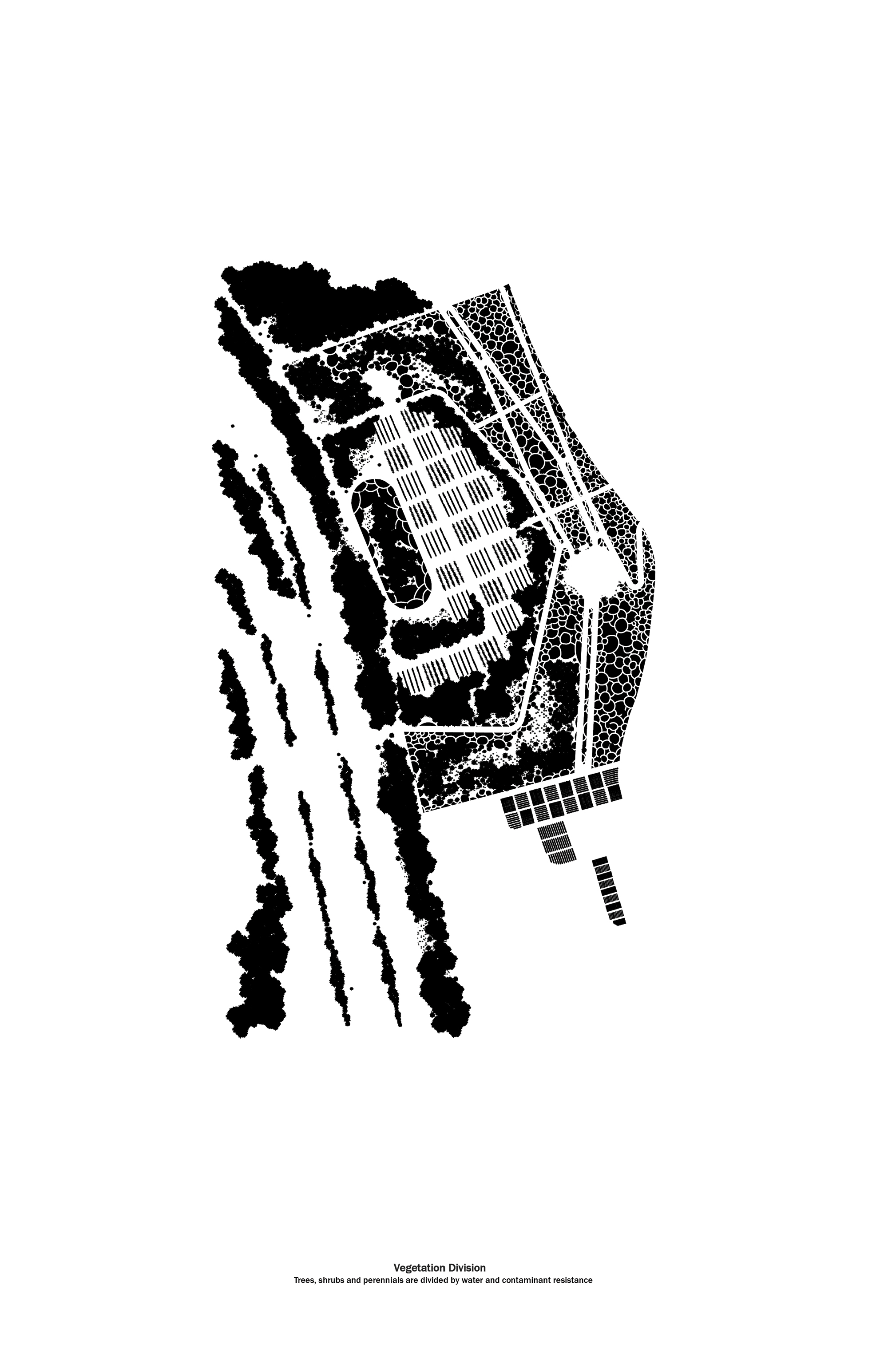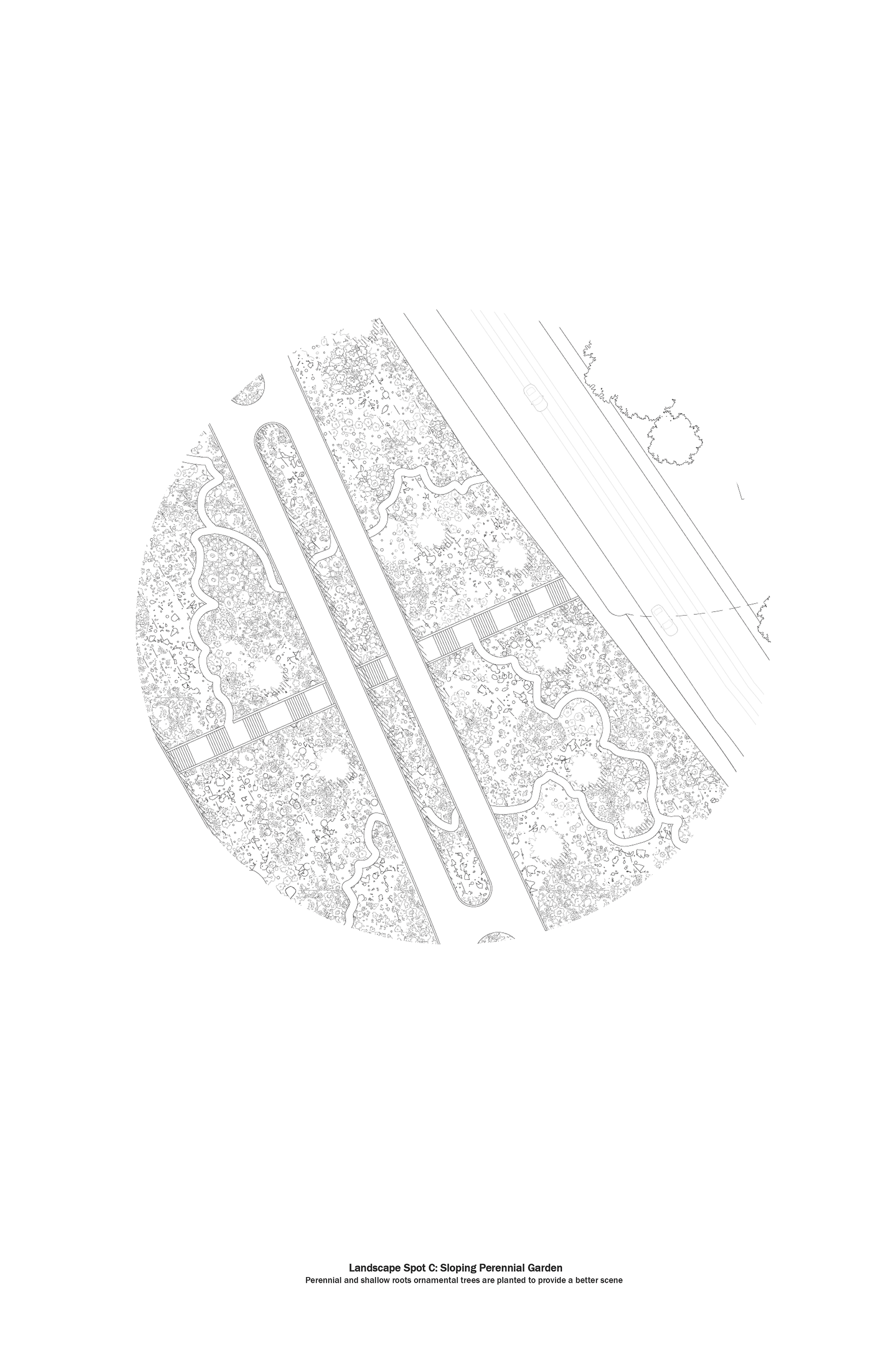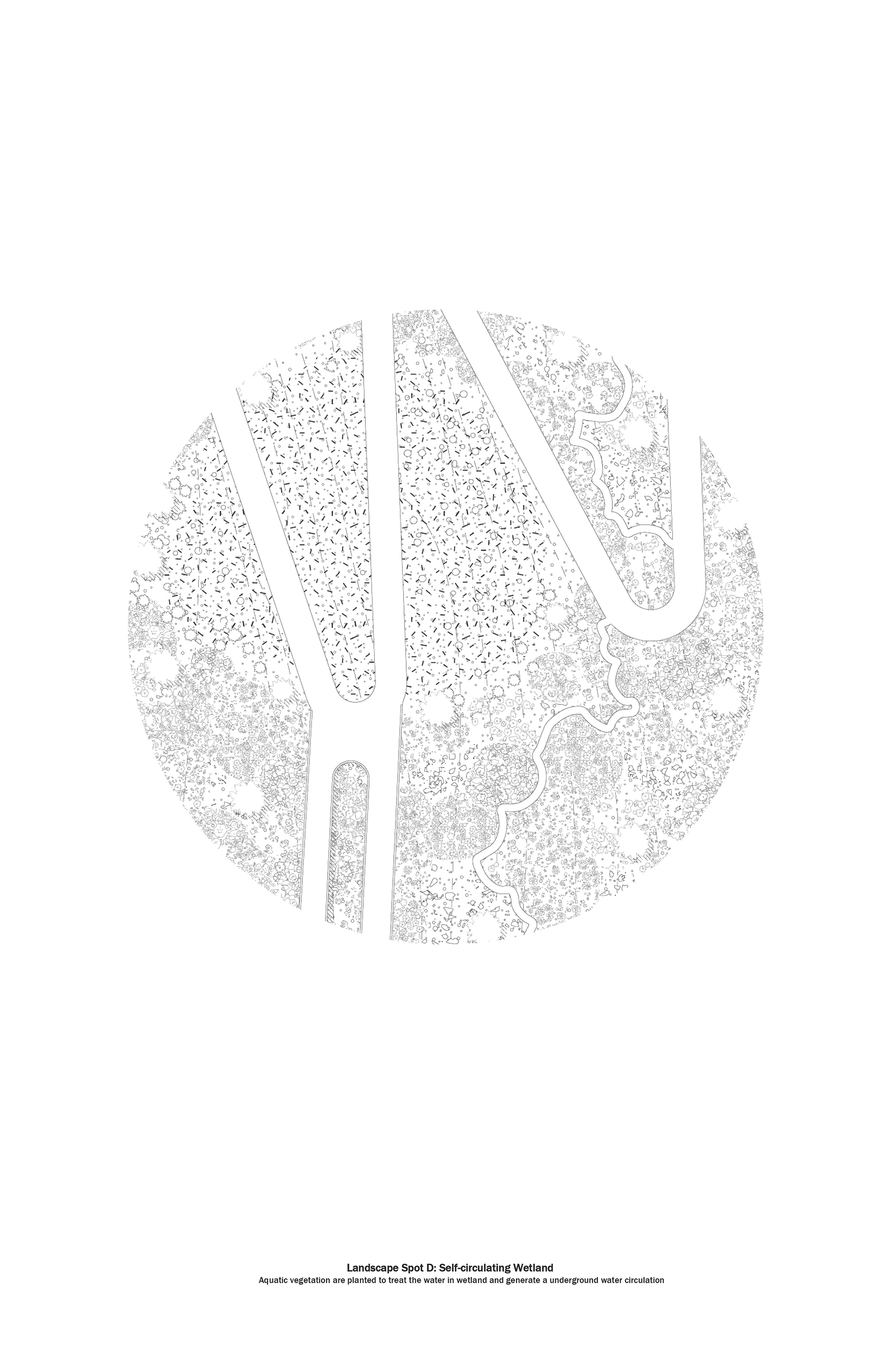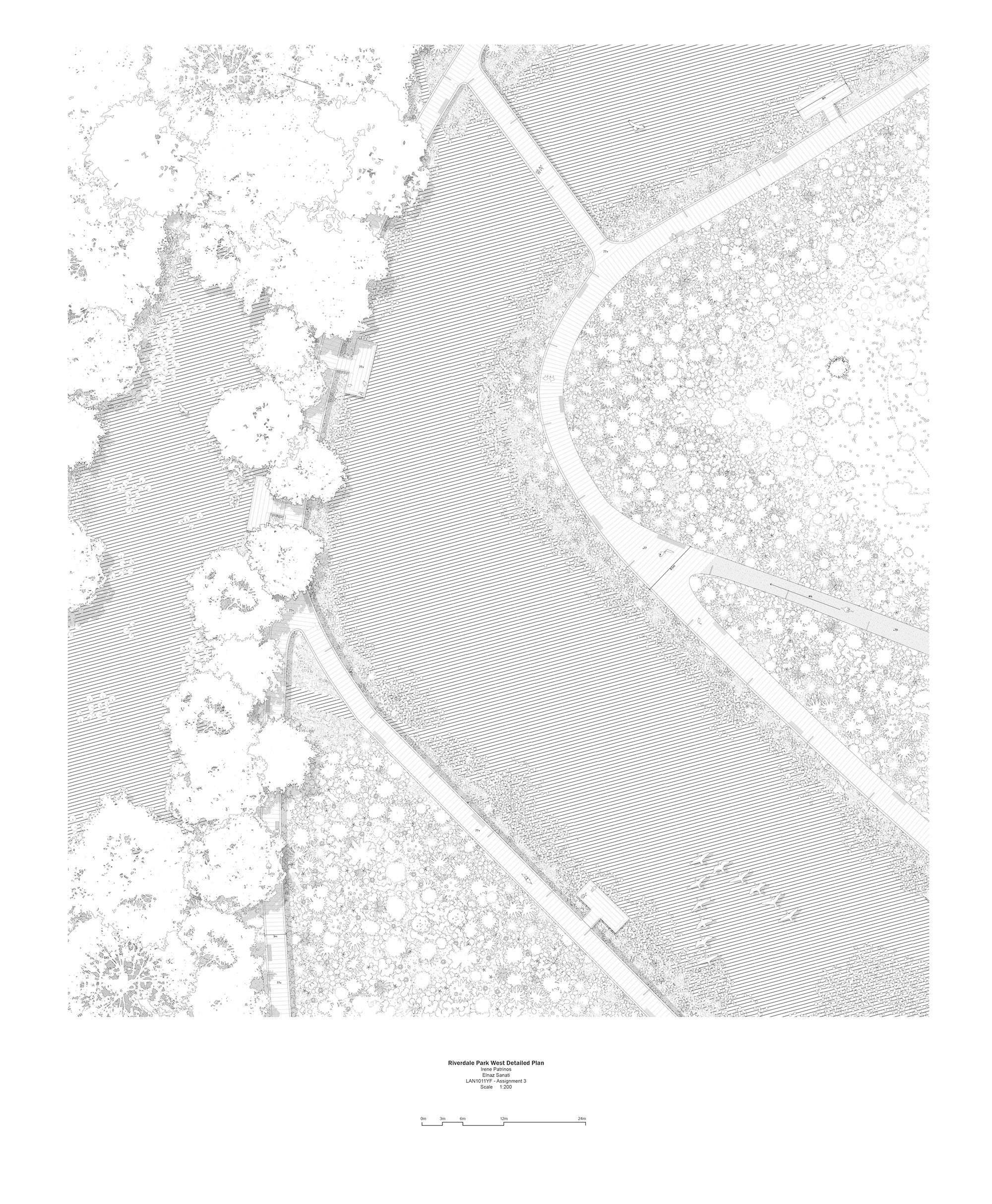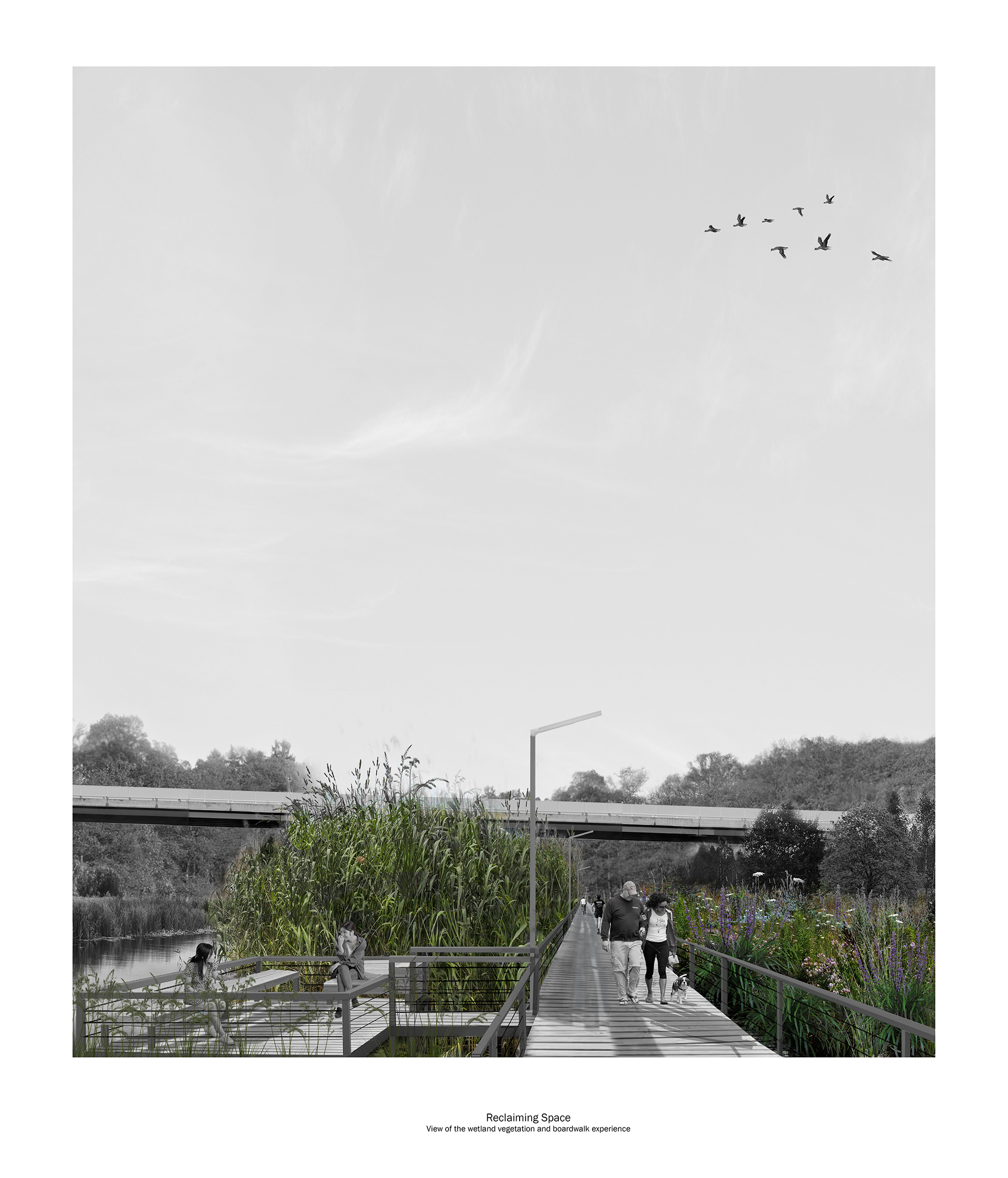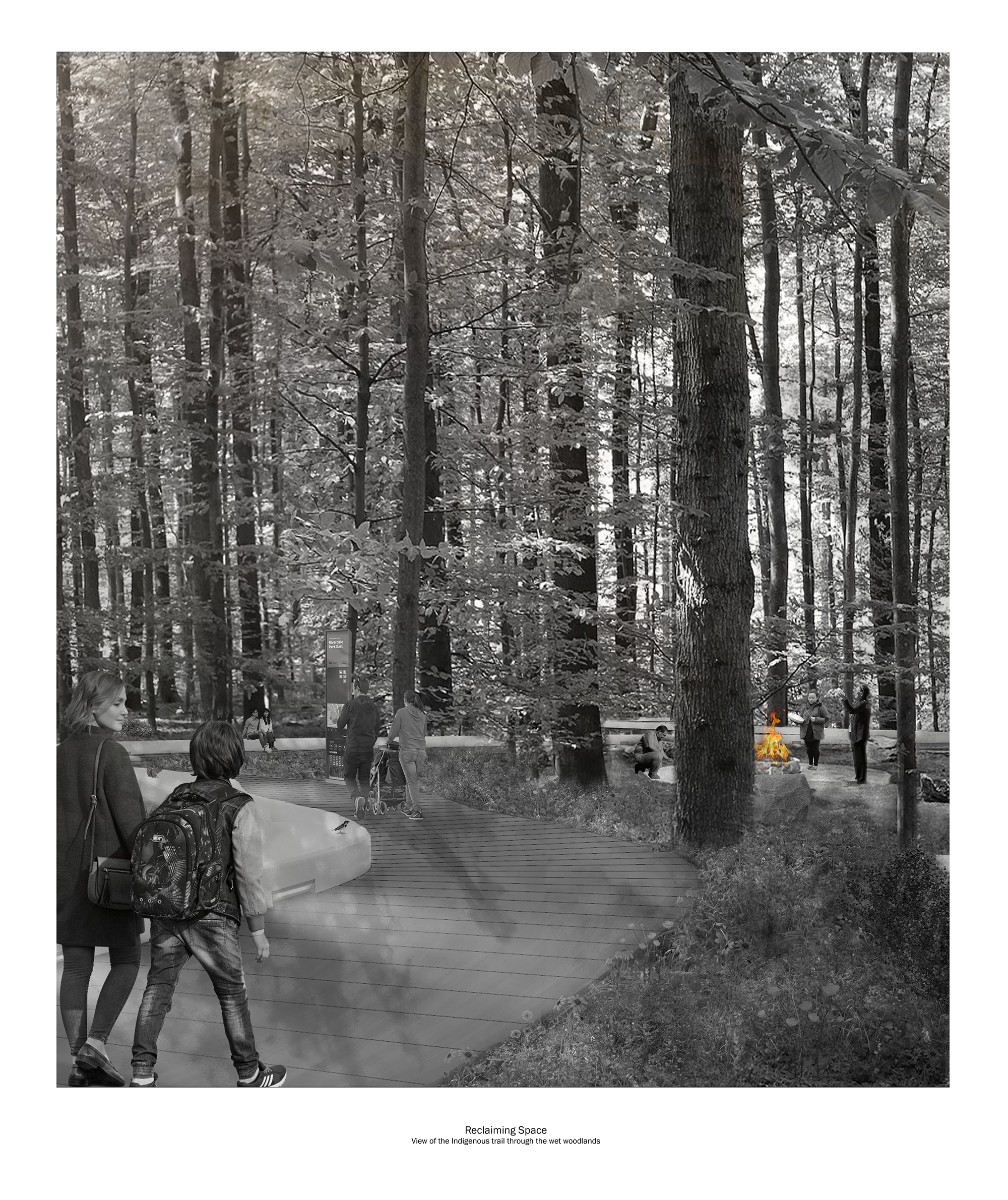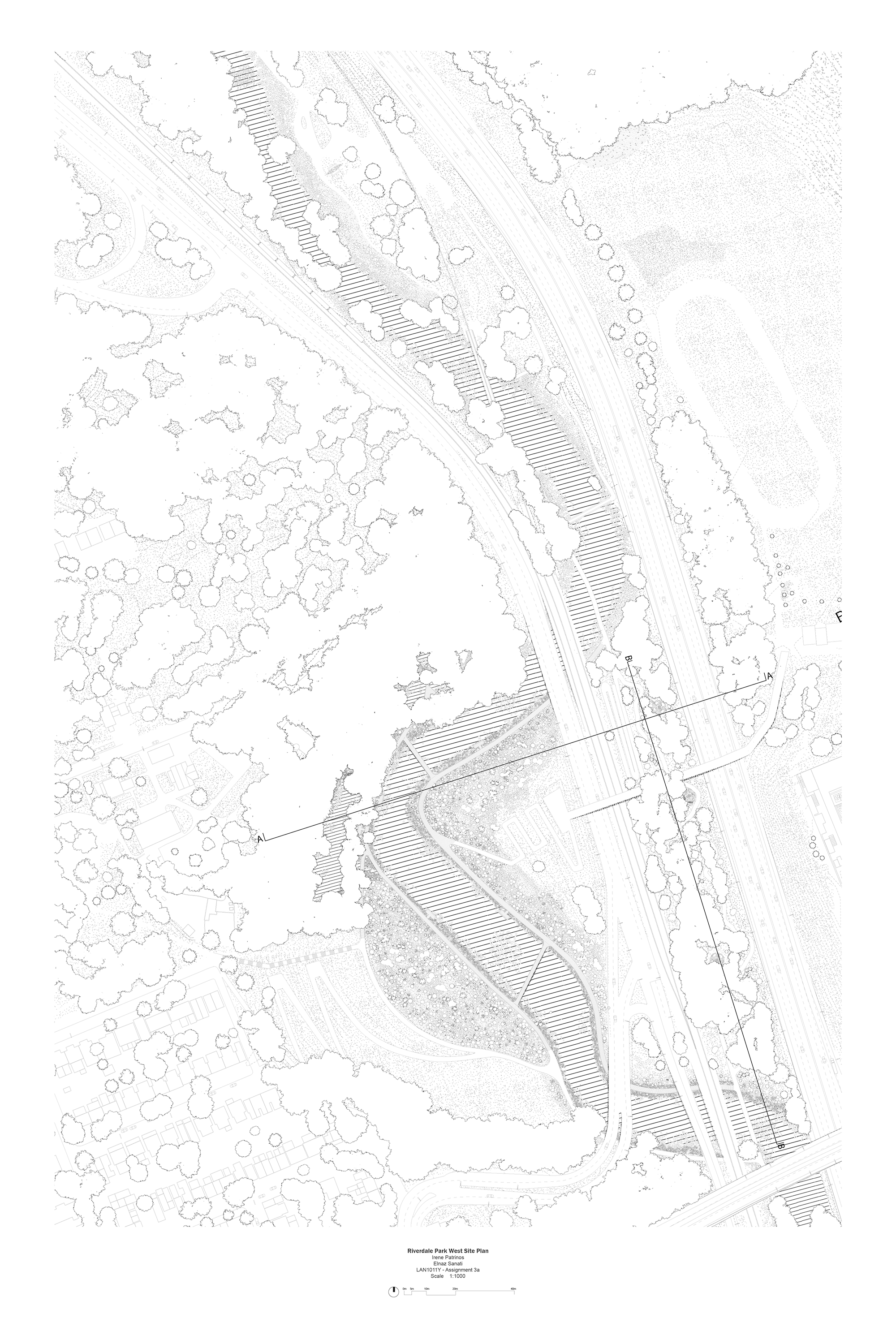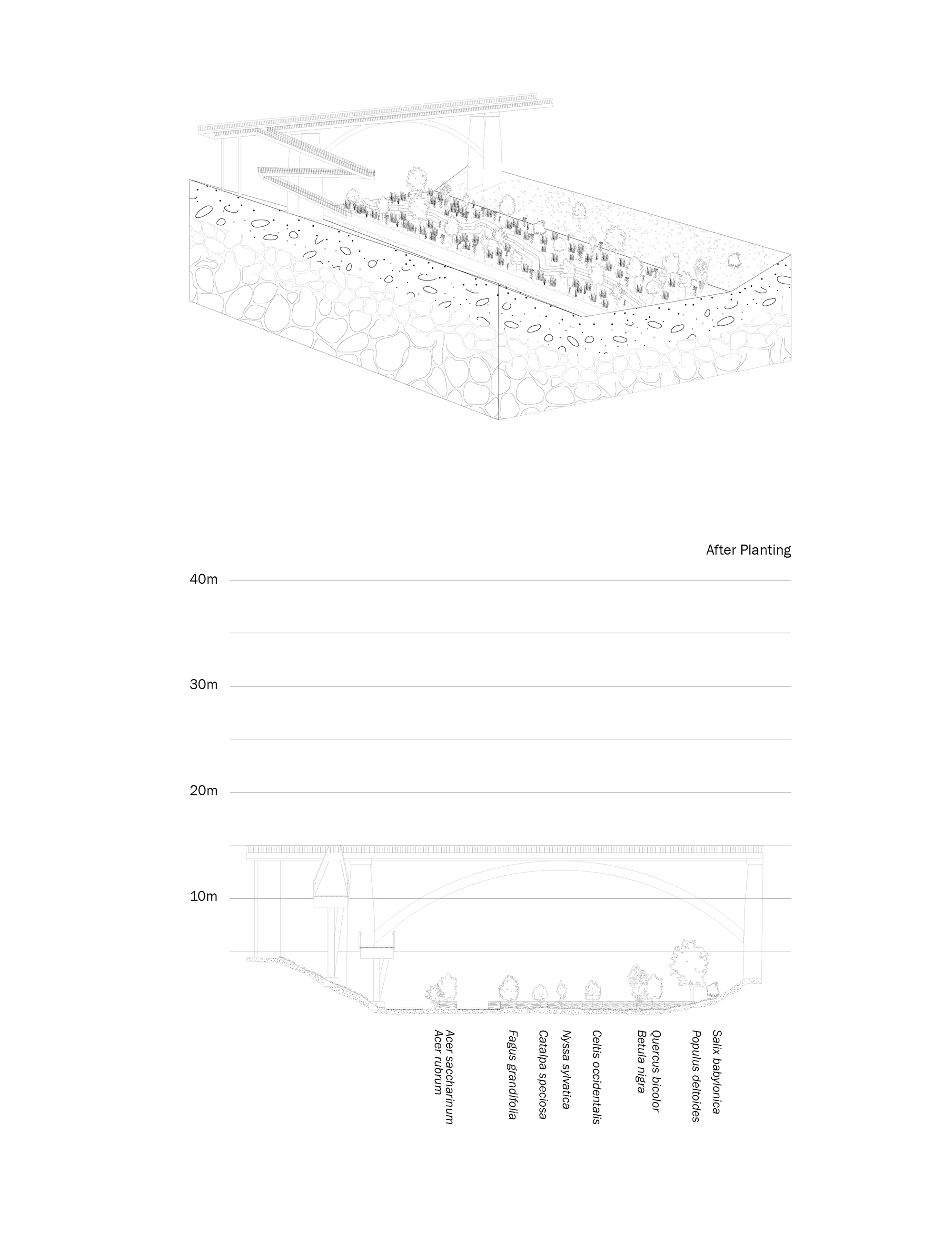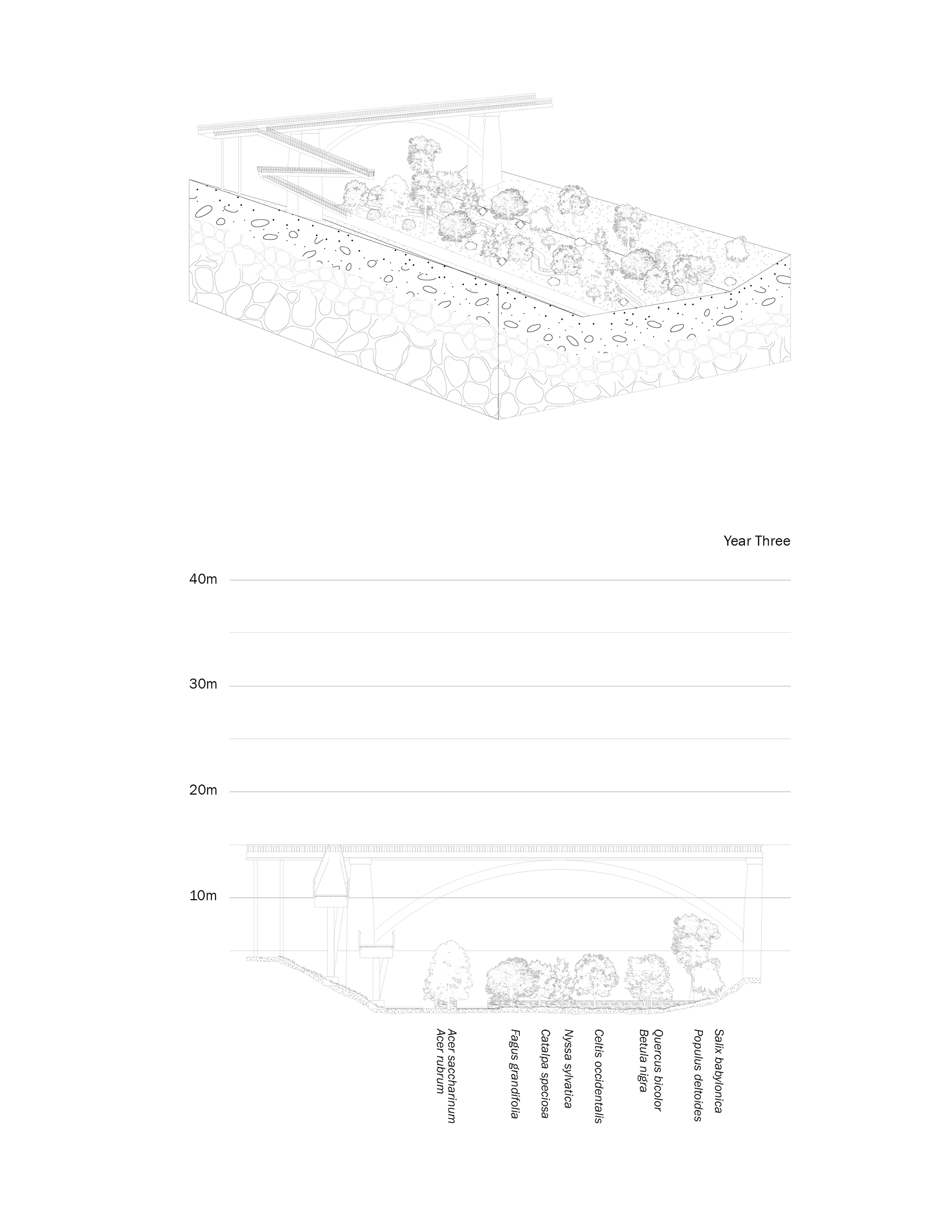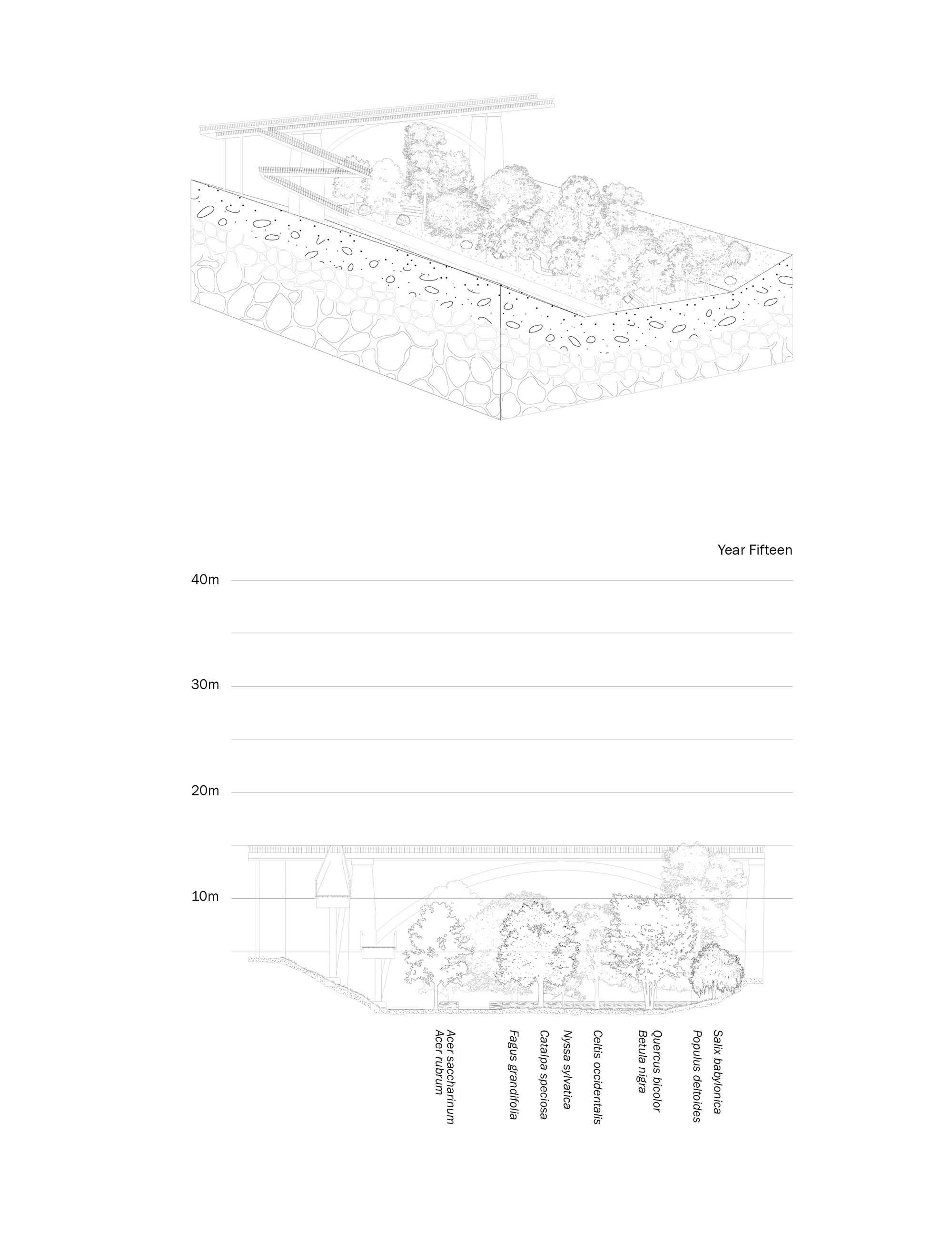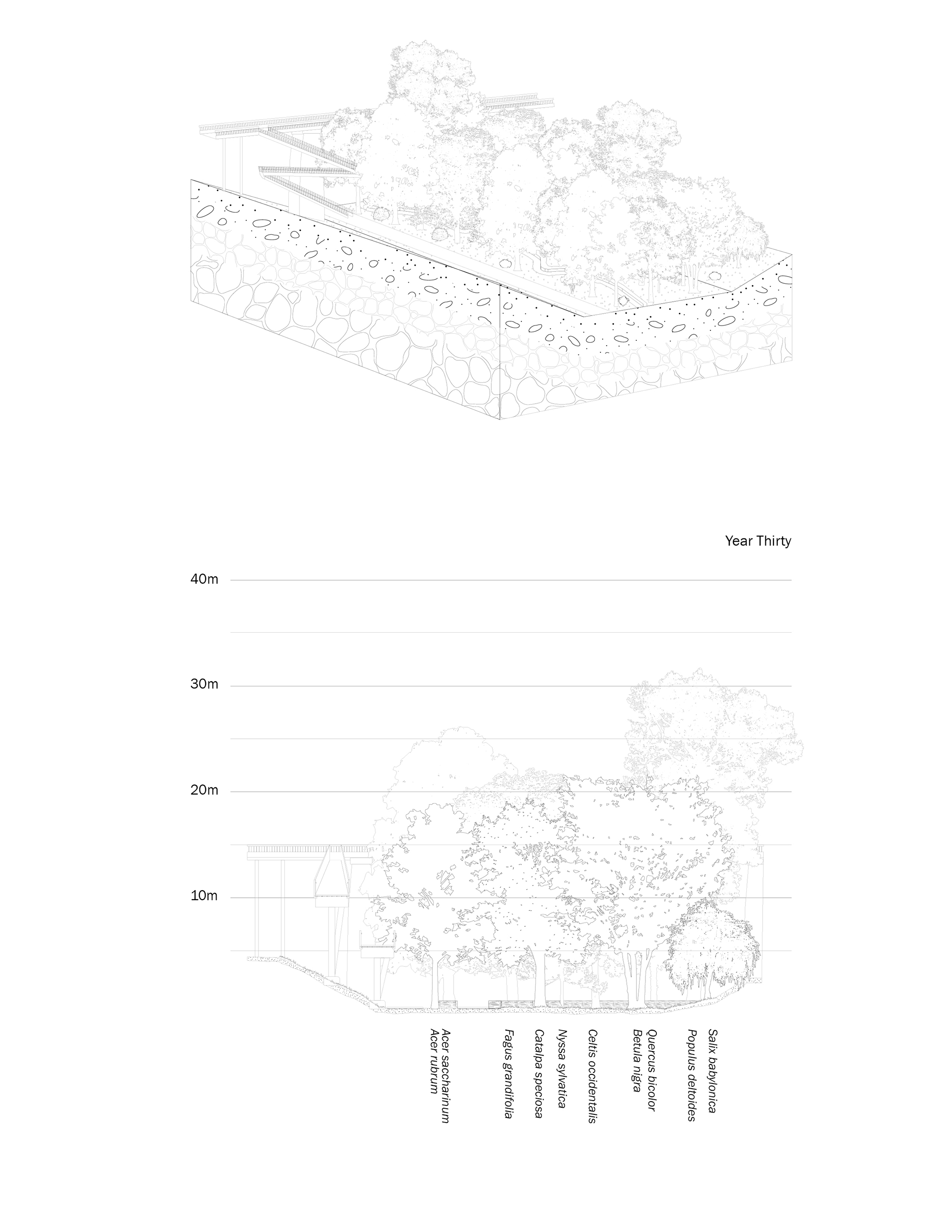LAN1011: Landscape Studio 1
Landscape Studio 1 is an introduction to the discipline of landscape architecture. In the fall 2020 semester, students were required to study Toronto's Riverdale Park and then make an informed proposal for the site's transformation over at least the next 30 years. Students were asked to take into consideration not only the site itself but also its materials, its relationships with nearby buildings, its context, and its history.
Molly Lalonde
Molly writes: "This project, titled Paying it Forward — Towards a Resilient Future, focuses on the concept of ecological resilience, with the goal of planning a sustainable urban environment for future generations. The design was heavily influenced by the environmental crisis, and it addresses issues of fossil fuel divestment and urban water pollution.
The design consists of a constructed wetland built in the Don River at Riverdale Park, with a series of island landforms that serve to retain water for a prolonged period of time, allowing wetland plants to clean the inflowing water, as well as provide a diversity of habitat zones. Elevated boardwalks protect the ecosystem from human intervention while simultaneously allowing people to get close to wildlife, fostering a sense of connection and an appreciation for this resilient, productive ecosystem. A small café located on a central island provides a gathering place for visitors and functions as a warming zone in the winter for skaters. The park will prompt visitors of all backgrounds and experiences to contemplate their roles in the urban ecosystem, inspiring environmental and community stewardship and engagement."
Emiley Switzer-Martell
Emiley writes: "Restoring the True Meaning of Place aspires to reinstate the importance of landscape literacy in urban communities by recontextualizing a natural heritage system, the Don River, through the establishment of sustainable coexistence between complex ecological systems and the urban citizens of today.
Four ecosystems distinguished from the site's pre-settled condition comprise the park's foundation and establish the natural systems capable of remediating its ecological degradation. A network of routes encourages exploration and reflection, with opportunities to investigate found moments of site-specific cultural, ecological, and historical significance. The choreography of a 15-year landscape transformation is designed to engage the community in naturally derived interpersonal lessons of patience, resilience, and beauty that may otherwise be difficult to experience in the city.
Community engagement in this transformation articulates the benefits of learning from landscape processes, transitioning individual values to community-wide interests in environmental stewardship. A long-term management strategy of open grazing, incorporating cattle from Riverdale Farm, continues the conversation around nature-infused urban living beyond the project's completion."
Zirong Liu
Zirong writes: "Riverdale Park is a popular and beautiful outdoor space that is frequently used by the surrounding residential area. Flooding issues caused by the Don River straightening plan have affected the park users' experiences during rainy days. The goal of this proposal is to redesign Riverdale Park in a way that respects the river and brings back people’s connection with nature.
At the starting point of this proposal, elevating Bayview Avenue and the railway will make a way for nature to thrive. Setting the river free to flow through the park will protect nearby infrastructure. Sheet piles used in the Don River straightening plan will be reinstalled as monuments to mark the ongoing changes. Eventually, the flooding issue will become the most beautiful characteristic of the park. People will enjoy the wet meadow created by nature and interact with the river in different seasons."
Yu (Sophie) Yan
Sophie writes: "The project is called Phyto-Education. It aims to use phytoremediation to deal with the soil contamination in Riverdale Park East, which is caused by the seasonal flooding of the Don and a closed landfill that covers 75 per cent of the site. During this process, the goal is to bring the remediation to the forefront and turn the site into an educational facility for landscape architects, ecologists, and the public.
Post-closure landfills require long-term maintenance and monitoring. Traditionally, cities' approaches to these sites have been to greenwash them and turn them into public spaces. Perhaps a better way is to remediate, and through the process of remediation educate the public, especially the younger generation."
Irene Patrinos
Irene writes: "This proposal flourished out of the desire to restore the health of the Don River by revitalizing species diversity and increasing the floodplain's ability to manage heavy rainfall and flood events. The river once meandered freely until it was straightened in the 1880s, resulting in two oxbow lakes. To restore the floodplain, we must reestablish this connectivity. I therefore proposed reconnecting the oxbow lakes, to allow the river to reclaim its space. This proposal focuses on the Riverdale West area, and the river will take a new trajectory through the park then reconnect to the existing channel. Together, the river diversion, new meandering boardwalk, and sunken seating platforms will allow people to fully experience the beauty of nature. The woodland area will also serve as a space for a new Indigenous trail system, designed after the historical river path, with place markers that share Indigenous teachings and history of the area. The relocation of the river channel will establish 550 metres of new wetlands and the create 460 metres of wet woodlands. Beyond permitting people to reconnect with nature, this will also encourage people to learn about and engage with the history of the land and the Don River. This proposal can be a flagship project to ultimately allow the entire lower Don River to move freely as it once did and restore the ecosystem that once thrived here."


